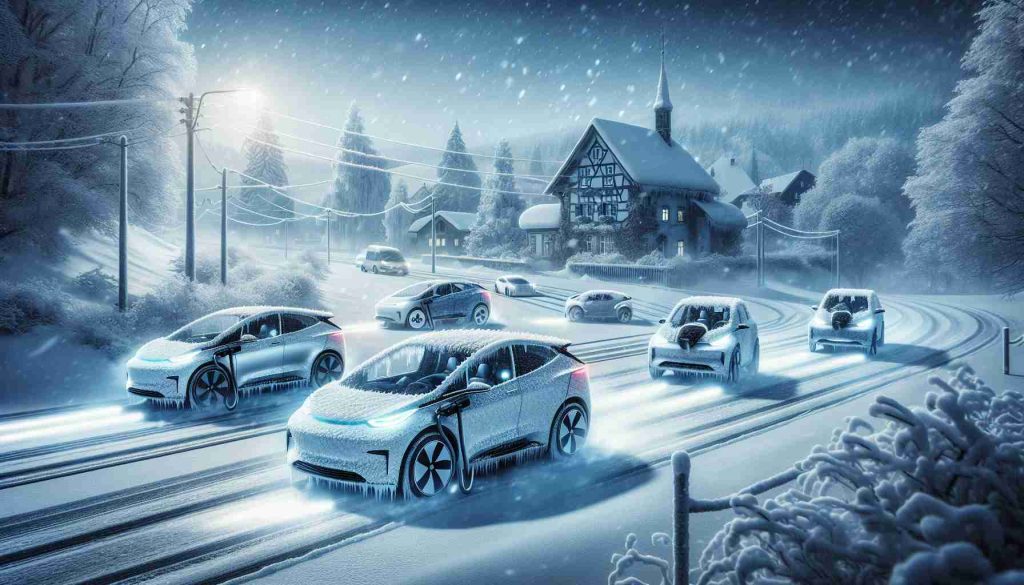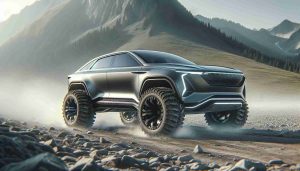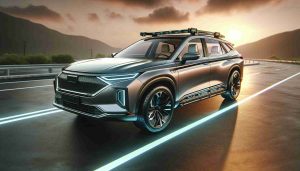Ready for Winter? Discover How GM’s EVs Conquer the Cold
5 min read
Engineered for Extreme Conditions
As the chill of winter blankets the United States, General Motors is revealing the remarkable capabilities of its electric vehicles (EVs) designed to thrive in frigid environments. Equipped with cutting-edge technology, GM’s Chevrolet, GMC, and Cadillac models promise comfort and reliability during the harshest conditions.
Innovative Thermal Management
At the heart of GM’s cold-weather prowess lies an advanced thermal management system. This smart system automatically regulates the battery temperature during charging, ensuring peak performance whether the mercury drops or rises.
Smart Preconditioning
Drivers can take advantage of preconditioning features, allowing them to warm the cabin in advance using their vehicle’s infotainment system or through a smartphone app. This capability ensures a cozy interior without draining battery life while the car is plugged in.
Efficient Climate Controls
GM’s Eco Climate mode enhances energy efficiency by targeting temperature control to occupied areas, which promotes comfort without excessive power use. Additionally, an integrated heat pump cleverly recaptures waste heat from various vehicle systems to efficiently warm the cabin.
Maximizing Battery Efficiency
To ensure peak performance, GM encourages drivers to keep their EVs plugged in when not in use, utilize energy-saving features like heated seats, and monitor tire pressure for optimal safety and efficiency.
With these excellent features, GM is committed to helping drivers navigate winter’s challenges safely and comfortably.
Beyond the Drive: The Broader Implications of Cold-Weather Electric Vehicles
The advancement of electric vehicles (EVs) such as those from General Motors is not merely a technical evolution; it represents significant shifts in society, culture, and the global economy. As EVs become more adept at thriving in extreme conditions, they pave the way for wider adoption in regions previously deemed unsuitable for electric mobility. This shift could lead to increased urban electrification, wherein communities invest in infrastructure that supports EVs, enhancing public transportation systems and reducing dependence on fossil fuels.
From a cultural perspective, the embrace of these EVs signifies a growing acceptance of sustainable practices in daily life. Consumers are increasingly prioritizing environmentally friendly choices, impacting everything from purchasing decisions to city planning. As EV technology becomes synonymous with reliability and convenience, it reinforces the cultural narrative of innovation and responsibility.
Moreover, the focus on efficient vehicle design could stimulate economic growth within the green technology sector. Companies specializing in thermal management solutions and energy efficiency could flourish, creating jobs and driving investment in sustainable industries.
However, the environmental repercussions cannot be ignored. While EVs contribute to reduced emissions during use, the impact of increased demand for batteries presents challenges regarding sourcing raw materials and electronic waste.
In conclusion, as GM leads the charge in cold-weather EV technology, the implications extend far beyond individual vehicle performance. This evolution could redefine societal norms, economic landscapes, and environmental responsibilities for years to come.
Unleashing the Power of Electric Vehicles in Winter: GM’s Innovations for Extreme Conditions
Engineered for Extreme Conditions
As temperatures plummet across the United States, General Motors (GM) is showcasing its commitment to providing electric vehicle (EV) owners with advanced technology designed to operate seamlessly in harsh winter climates. Through innovative engineering and features, GM’s lineup, including Chevrolet, GMC, and Cadillac, promises to redefine comfort and reliability for drivers facing winter’s challenges.
# Innovative Thermal Management
One of the standout features of GM’s EVs is the advanced thermal management system. This technology is integral to maintaining optimal battery performance. The system automatically regulates battery temperatures during charging, ensuring that the vehicles can operate efficiently regardless of external temperatures. This capability not only enhances battery longevity but also improves driving range, critical for winter travel.
# Smart Preconditioning
A pivotal aspect of GM’s winter-ready models is their smart preconditioning feature. This allows drivers to heat the cabin before starting their journey through integrated infotainment systems or dedicated smartphone apps. By preconditioning while the vehicle is plugged into a charger, drivers can enjoy a warm interior without compromising battery life, providing an added layer of convenience during icy mornings.
# Efficient Climate Controls
Incorporating cutting-edge climate controls, GM’s Eco Climate mode optimizes energy use by focusing heating efforts on areas of the cabin that are occupied. This individualized temperature control not only ensures comfort but also minimizes energy consumption. Furthermore, GM has introduced a heat pump that captures and repurposes waste heat from various systems in the vehicle, enhancing overall heating efficiency without draining the battery.
# Maximizing Battery Efficiency
To further boost performance in frigid conditions, GM promotes practices such as keeping EVs plugged in when not in use and utilizing energy-saving features, including heated seats and steering wheels. Regularly monitoring tire pressure is also vital, as properly inflated tires contribute to improved safety and energy efficiency, especially on slick winter roads.
Pros and Cons of GM’s Winter-Optimized EVs
Pros:
– Advanced thermal management system maximizes battery life and performance.
– Smart preconditioning enhances comfort without draining battery.
– Eco Climate mode promotes energy efficiency in heating.
– Innovative heat pump improves cabin warmth without depleting battery resources.
Cons:
– Winter driving range may still be affected by extreme temperatures.
– Some features may require smartphone connectivity for optimal use.
Pricing and Market Insights
Pricing for GM’s electric models varies widely based on specific configurations and features. For instance, the Chevrolet Bolt starts around $26,500, while the GMC Hummer EV can exceed $110,000. As the adoption of EVs continues to rise, driven partly by environmental concerns and impending regulations, GM is poised to capture a significant share of the winter EV market.
Innovations and Sustainability
The ongoing evolution of GM’s EV technology aligns with broader trends toward sustainability and environmental responsibility. By prioritizing efficiency and comfort in extreme conditions, GM not only supports winter drivers but also reinforces its commitment to reducing carbon emissions and fostering a cleaner future.
As the market for electric vehicles continues to grow, with innovations in battery technology and vehicle design, GM’s winter-ready vehicles exemplify the balance of comfort, performance, and ecological mindfulness.
For more information on GM’s exciting innovations and offerings, visit General Motors.


